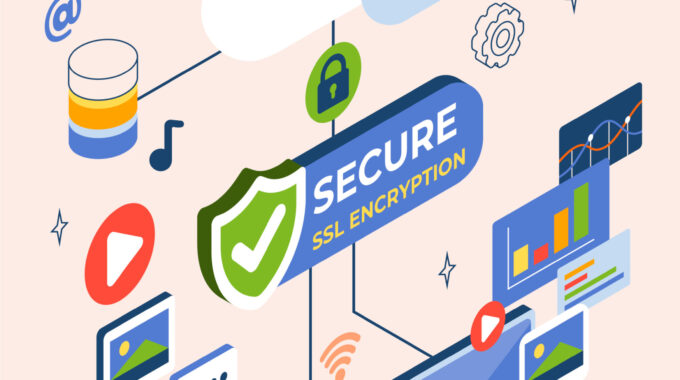Introduction In the rapidly evolving landscape of the insurance industry, the integration of technology (Insurtech)…

Cybersecurity Considerations for Policy Administration Systems
Introduction:
Policy Administration Systems have become widely used as a result of the digital transformation of insurance and financial services, which has simplified policy management procedures. But as a result of their heightened reliance on digital platforms, businesses are now more vulnerable to cutting-edge cybersecurity risks. The purpose of this article is to help businesses comprehend and deal with the particular cybersecurity issues related to Policy Administration Systems.
Understanding Policy Administration Systems:
Understanding the architecture and functionalities of Policy Administration Systems (PAS) is crucial for identifying potential security vulnerabilities. Policy Administration Systems (PAS) are the backbone of insurance and financial organizations, managing the creation, modification, and renewal processes. These systems store vast amounts of sensitive data, making them attractive targets for cybercriminals.
Unique Challenges in Cybersecurity for PAS:
Data Sensitivity:
Sensitive data, including as financial records, policy details, and customer information, is abundant in PAS. Confidentiality and preventing unwanted access to this data are crucial.
Integration Complexity:
When PAS interfaces with other systems inside an organization, a complicated web of data flows is generally created. Every connectivity point creates a potential vulnerability that needs to be controlled carefully to avoid data breaches or unwanted access.
Regulatory Compliance:
The insurance sector must abide by strict legal standards pertaining to privacy and data protection. To stay out of trouble legally and keep policyholders’ confidence, PAS must abide by these rules.
Cybersecurity Best Practices for Policy Administration Systems:
Encryption and Data Protection:
It is essential to provide strong encryption algorithms for data in transit and at rest. This guarantees the security and integrity of sensitive data by making sure that even in the event of unwanted access, the intercepted data remains unreadable.
Access Controls and Authentication:
Multi-factor authentication systems and strict access controls are essential for preventing unwanted access to the PAS. It is advisable to employ granular access rights to restrict user privileges according to their roles and responsibilities.
Regular Security Audits and Penetration Testing:
Frequent penetration tests and security audits assist in locating and fixing problems early on. Organizations can evaluate the efficacy of their security measures and make required adjustments by modelling cyberattacks.
Employee Training and Awareness:
Cybersecurity breaches continue to be significantly influenced by human mistake. Employees should be taught about social engineering risks, cybersecurity best practices, and the significance of keeping their login credentials secure through thorough training sessions.
Incident Response and Recovery Plan:
Creating a solid plan for crisis reaction and recovery is crucial. Establishing clear protocols is essential for organizations to quickly identify, address, and recover from cybersecurity events while limiting the damage to their operations and data integrity.
Emerging Threats and Future Considerations:
Ransomware Attacks:
Organizations are at serious risk from ransomware attacks, and PAS is not exempt. Putting safe storage, frequent backups, and a thorough response strategy in place are essential for lessening the effects of ransomware attacks.
Artificial Intelligence and Machine Learning Threats:
The possibility of deliberate attacks on these algorithms grows as PAS uses AI and machine learning for data analysis and decision-making on a larger scale. Companies need to think about how new technologies will affect cybersecurity and put security measures in place.
Regulatory Evolution:
The cybersecurity regulatory environment is ever-changing. To prevent financial and legal repercussions, organizations need to stay up to date on regulations that change frequently and make sure its PAS still complies with the most recent criteria.
Recommendations for Organizations:
Continuous Security Monitoring:
Use ongoing security monitoring to identify possible threats and take immediate action. The organization’s capacity to quickly detect and address cybersecurity incidents is improved by proactive monitoring.
Collaboration with Cybersecurity Experts:
Consult with consultants and cybersecurity specialists to see how vulnerable your PAS is. Working with experts enables firms to put effective security measures in place and keep ahead of new threats.
Regular Updates and Patch Management:
Keep the PAS and its connected components up to date with software updates and security patches. In order to mitigate known vulnerabilities and reduce the likelihood of exploitation, timely upgrades are essential.
Conclusion:
In conclusion, while increased digitization of policy administration results in previously unheard-of levels of efficiency, it also raises the possibility of cybersecurity attacks. Prioritizing cybersecurity considerations for Policy Administration Systems is imperative for organizations in order to secure confidential information, uphold regulatory compliance, and preserve their brand. Through the implementation of preemptive measures, ongoing awareness of emerging risks, and cooperation with cybersecurity specialists, companies may effectively navigate the dynamic cybersecurity terrain and guarantee the robustness of their Policy Administration Systems.




